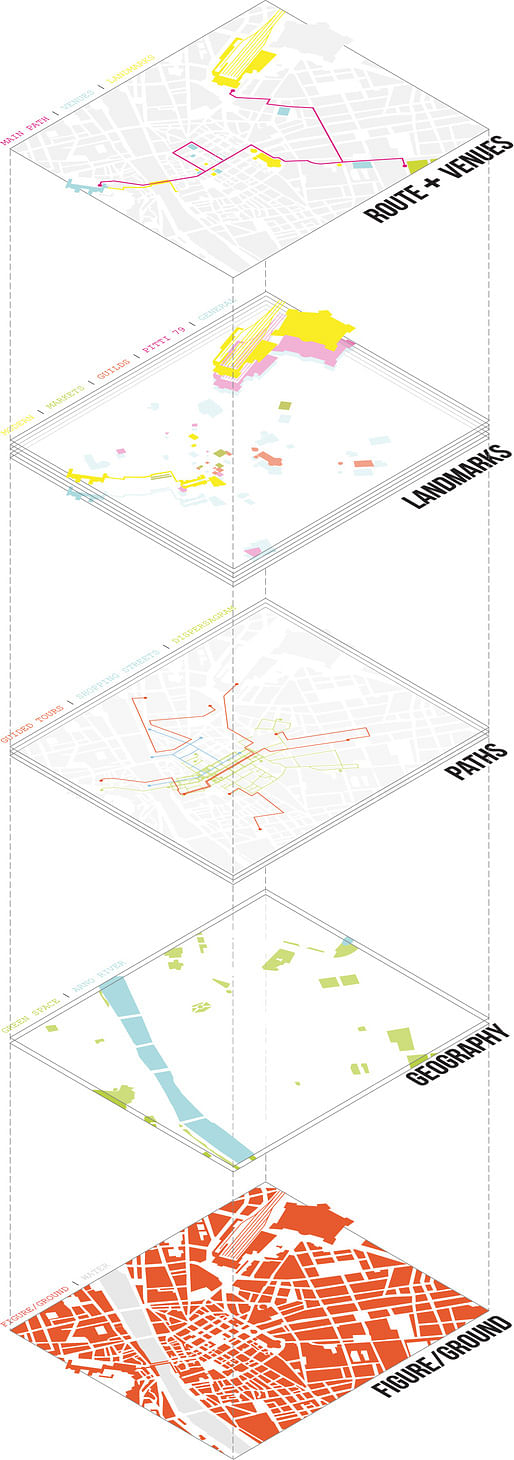
Jan '11 - Feb '12
In the last post, I outlined the theoretical foundation for my study abroad proposal from Spring 2011. The project, in short, was about contextualizing temporary events within the culture and history of a significant place.

Thom Browne, Pitti 75 (via http://foreverydaypeople.net/2011/09/28/the-uniformity-thom-browne-at-pitti-uomo/)
Most of the research for the project was taken on weekend trips to Florence. Through the week, I would read Florentine history and prepare an itinerary which would take me to historically significant buildings with ties to the history of fashion within the city. I would then take pictures, map my route, and make notes on each place I visited.
These were compiled into master maps, which were used to determine the most meaningful route through the city.

Composite of Mapping Exercises
The route was broken up into four segments:

Pathway Design
Having mapped the event and determined the venues, the last step was to create two simple structures to house stalls for the designers. The two venues chosen to create the interventions were two of the most historically significant: Piazza Repubblica and Mercato Nuovo.

Left: Exploded Axon for Piazza Repubblica, Right: Exploded Axon for Mercato Nuovo
These interventions (admittedly diagrammatic and somewhat rushed) reframe open space and allow for an atypical experience of the city and area, reconnecting the cloistered event to a more full vision of the city that created it.
To see the full presentation, please go to: http://issuu.com/bsteadman711/docs/eventcities
A first-person account of the interior life of the College of Architecture, Planning, and Design at Kansas State University. This blog seeks to bring you the latest architecture news from the fabled Little Apple -- Manhattan, Kansas.
No Comments
Block this user
Are you sure you want to block this user and hide all related comments throughout the site?
Archinect
This is your first comment on Archinect. Your comment will be visible once approved.